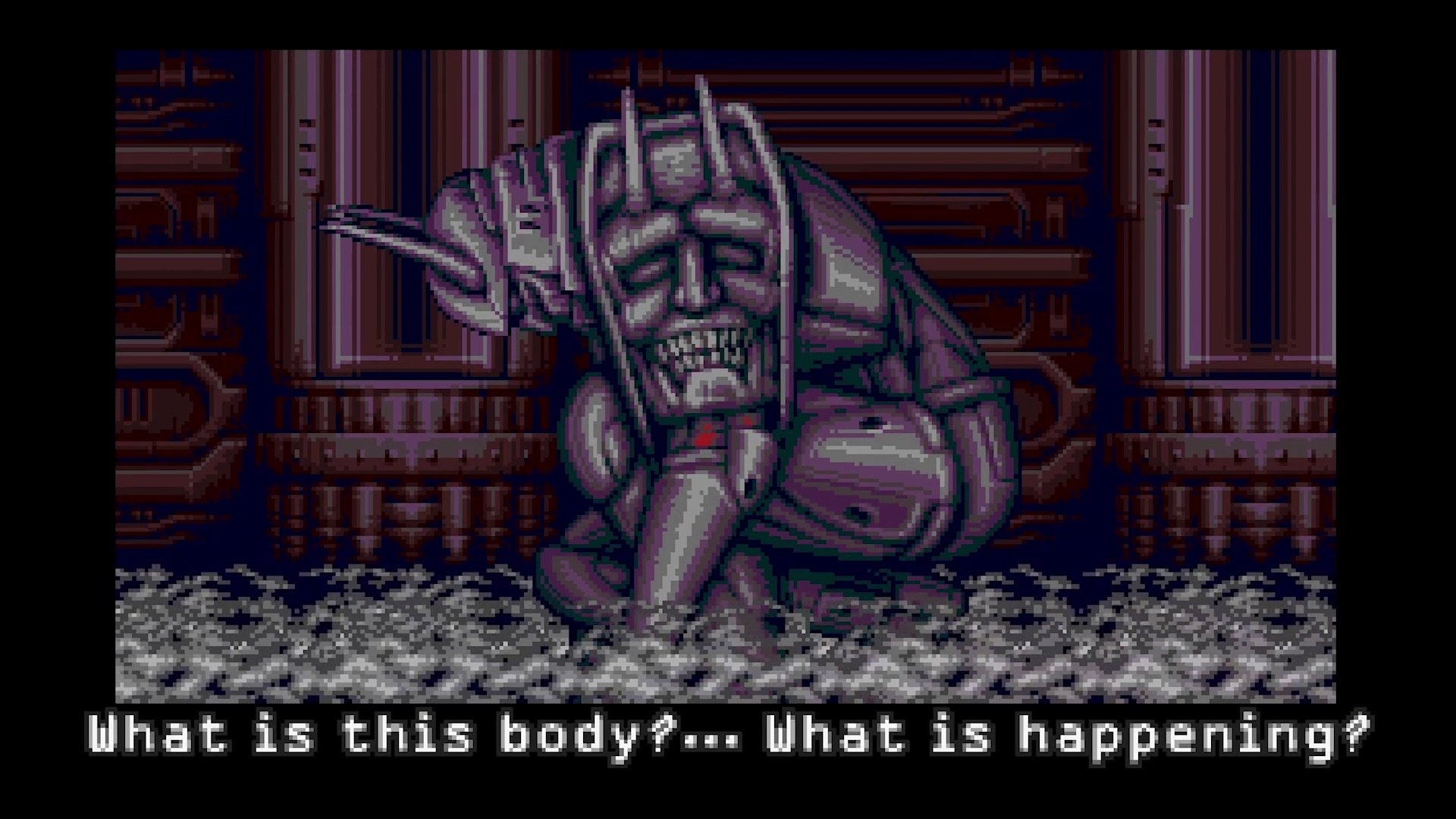There are two kinds of retro style games. There are throwbacks like Undertale and Tunic — games that are doing things visually and architecturally that 16-bit consoles were clearly never capable of — and then there are games like Vengeful Guardian: Moonrider.
Vengeful Guardian: Moonrider, the latest title from Blazing Chrome developer JoyMasher, is a throwback to SNES and Genesis era that feels like it could have been released in the 1990s.
Think Shinobi or Ninja Gaiden by way of Mega Man and you’ll start to have a picture of what Moonrider is going for. By and large, it hits these marks and the result is a brief and charming nostalgia trip that lacks much replay value. Still, if old-school action platformers are your jam, you might want to take a gander at Vengeful Guardian: Moonrider.
From its onset, Vengeful Guardian: Moonrider is a satisfying experience. The pixel art is detailed and evocative and the combat itself feels great. If you are familiar with this type of throwback, the controllers will feel immediately intuitive. The three-button gameplay isn’t complex, but it allows you to soak in the rocking ninja-mech vibes the game is putting out.
You are introduced to the totalitarian state Moonrider takes place within during a fairly simple set-up. You play as the titular Moonrider, a state manufactured killing machine who rejects its intended purpose and rebels against its creators. In this Mega Man-influenced journey, you are able to take on any of the six main levels and their bosses in any order you choose. Like its classic predecessor, whenever you beat a boss in Moonrider you will acquire its weapon.
In addition to a growing roster of alternate weapons, Moonrider also hides Power Modules in all its levels. Your mech has only two slots for modules, but there are a dozen hidden throughout the levels. Each one of these feels like a significant advantage. From reduced damage to MP and HP regen to a module that allows you to detect secrets within all the other stages, the more Power Modules you get the tougher it gets to choose a loadout.
The Power Modules gives you a number of ways to overcome the more difficult levels of Moonrider. While the game has an open ended structure, it becomes clear the difficulty curve increases as you follow the path from right to left on the map screen. In this way the structure is at odds with itself — tackle the levels in whichever order you choose, but there will be ones that are objectively more difficult than others regardless of which upgrades you have.
Still, the amount of build variety on offer is impressive. By far the best part of Moonrider was experimenting with different builds in order to figure out the best way to tackle the tricky later levels. At first this felt frustrating, but it led to some of the most satisfying victories I had over the game’s bosses — of which there are multiple per stage.
While there are certainly difficult segments of Vengeful Guardian: Moonrider, it is fairly forgiving as far as these types of throwback titles go. Nintendo and Super Nintendo games were brutally difficult, but Moonrider is extremely generous with its checkpoints and extra lives.
Sometimes you will have to start a level from the beginning if you lose all your lives, but the stages are short enough that rarely feels like a punishment. Plus, your character is a lot less fragile in Moonrider than in many of the games it is inspired by.
Even though Moonrider is short — only 3 hours to complete all the content— there is an impressive amount of variety to these levels. Vehicle sections break up the action and they are surprisingly just as engaging as the on foot gameplay. The only disappointing aspect of its short length is the lack of replayability once you’ve found all the modules.
For example, I would have loved to unlock an addition module slot after finishing the game. There is an awesome module that allows you to customize the coloring of you mech, but it takes up an entire slot that a helpful ability could be in. This pretty much ensures that most players will not use it or even touch the customization options. Limiting this option to a Power Module felt like an odd choice in the first place and adding an unlockable slot would remedy this unfortunate restriction.
In these handful of hours, Vengeful Guardian: Moonrider attempts to tell a story about revolution and the power of fighting back. I say attempts because the translation of the dialogue leaves a lot to be desired. The sentence construction and use of the English language is so shoddy that the story fails to be a factor when judging this game. Good thing narrative nuance isn’t what most players will be coming to this throwback title for.
Vengeful Guardian: Moonrider Review — The Bottom Line
Pros
- Smooth combat and platforming.
- Jamming soundtrack and nostalgic pixel art.
- Power Modules offer a compelling risk-reward layer and open the game up to an impressive variety of playstyles.
- Checkpoints and life system is well balanced.
Cons
- Cosmetic customization locked to a power module.
- No post-game unlocks.
- Difficulty curve and opened-ended structure feel at odds with each other.
- Poor translation takes all impact out of the story.
Far from revolutionary, Vengeful Guardian: Moonrider is a tight and varied old school action platformer that doesn’t overstay its welcome. What it lacks in length and post-game unlockables, it makes up for with sick pixel art and a roaring chip-tune soundtrack.
[Note: The Arcade Crew provided the copy of Vengeful Guardian: Moonrider used for this review. Featured image via The Arcade Crew.]










Published: Jan 12, 2023 01:15 pm